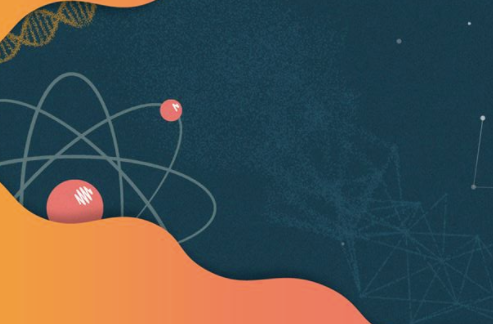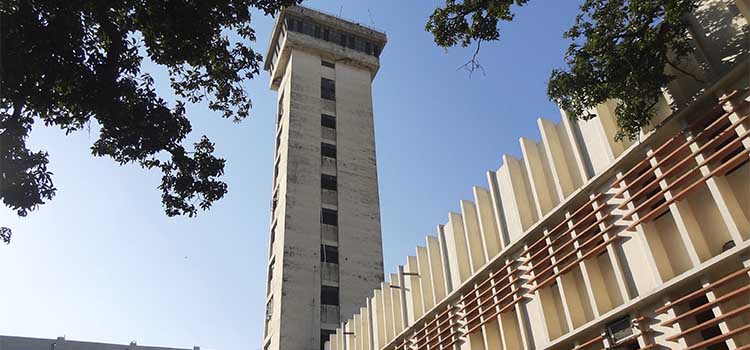

Body of IITR

Introduction
There are two things at which IIT Roorkee is much better than its peers. The first, of course is laying new roads. The other is constructing buildings, which within years of their emergence become as obsolete as what Kapil Sibal became after being the HRD Minister. The existence of the Thomso/Cogni office (depending on which time of the year it is) and a highly functional laboratory for the Biotechnology Department bear testimony to this hypothesis. At the same time, however, there are several places that do not appear to be as useless. No, we are not talking about the secluded spots behind Civil and Architecture Departments here. Or wait. Maybe we are.
Regardless, this is a fact that we must take with a pinch of salt, or a shot of vodka if that be the case: for all their relevance to our lives - most of us have never cared to bother enough about the several landmarks here in R. We might’ve often seen them as a fleeting blur in the background, but it is very rarely that we have stopped to take a second glance. Watch Out! brings to you the complete story behind some of the most baffling examples of modern(?) architecture here in IIT Roorkee with the hope that the next time somebody stops and asks you the way to the erstwhile transmission tower, you are not caught like a deer in the headlights of Salman Khan’s car.
The Tower of Gloom
One thing that stands out of the picturesque view of the main building is the EC tower. Often referred to as, “What in the hell is that?”; one cannot easily fathom the reason for the presence of this tall structure right in the heart of R. The tower, apart from being the center of a lot of non-magazine-friendly jokes on campus, also attracts a lot of attention from unsuspecting freshmen.
Surrounded with mysterious stories, one of which hints the presence of a secret silo in its basement, we set out to find the history and purpose of this structure on campus. The caretaker from EC department explains, “When it was built around 1978-80, the plan was to install a transmitter on the tower for the purpose of microwave research. They also had necessary equipment mounted on top to facilitate it. However, the plan never worked out and ultimately the equipment was removed.” He further adds on how the same experiment was proposed at BITS Pilani but it was IITR, where the structure was actually built.
Some civil and earthquake engineering student and professor groups have conducted research projects over the years on the structural stability of the tower. The tower was used again by Prof. R.K. Nayyar in the 1980s for mounting the telescopes so as to observe a solar eclipse. However, it now remains in a highly shoddy and unmaintained state. Unfortunately, the same can be said about the entire EC department.
The three metaphors of advancement
Taking a leap from the EC circle to the Gaon, the divide between the inhabitants of this region and the rest of the campus starts becoming evident. Cut off from the Students’ Club, Nescii, CBRI and other places on campus that are bustling with activity; the students in this area are often forced to spend most of their time inside their hostels. This is why as soon as reports of the construction of a Multi-Activity Centre behind Cautley Bhawan started flowing in- students were absolutely delighted. However, most who saw the first brick of this centre being laid have long since graduated, and the rest live in a faint hope of the structure being complete in time for their 25th Alumni Meet.
As a news note in one of our 2011 issues states, “The four storey structure is planned to have an auditorium, a restaurant, a post office, coffee corners, food courts, shops, banks, and a bowling alley.” The news note also promised that the construction would be complete in the next 15 months. 42 months and three Thomsos later- the work is yet to finish. A conversation with the project manager reveals that the much awaited M.A.C, built at a cost of over 68 crore rupees, should finally be ready by the next semester. The construction phase is nearly complete and the process for issuing tenders has started.
The indoor sports centre is expected to reduce the burden on the packed UG club. The building also promises to offer rooms to various cult-soc sections for practice and meetings. The commercial centre will be home to a number of franchises providing refreshing new alternatives to Dominos. To top it all off, one of the buildings will be an indoor auditorium, accompanied by a new open air amphitheatre. If everything goes according to plan, starting next semester a desire to have a gratifying burger would no longer necessitate a trip to Pentagon.
The institute architect, Mahua Mukherjee, states that NBCC is given the tender for all construction work that happens inside the campus. It is supposed to give an entire schedule of the construction undertakings. What went wrong causing the entire project to be delayed remains unclear, and nobody from the administration is ready to answer. Perhaps, the best what we as students can do, is remain patient and hope that the M.A.C. delivers what it promises.
Numbered trees, Locked Gates and The Night’s Watch
If you ever happen to chance upon a photograph of IIT Roorkee from the 1960s, you would see that the last 50 years have seen a great deal of changes. Right from the construction of several new department buildings, bhawans and a sprawling library, to the establishment of a new lecture hall complex and a fully furnished students’ club - our institute has clearly shown signs of improvement. However, what most people fail to notice are the several other changes which are slightly more difficult to explain. For example, our campus has a lot more trees now than it ever did before. While some believe that the trees, numbered in an erratic fashion, have been put in place for the promotion of Chetan Bhagat’s next what he likes to call a novel: 4008 Ways to Repeat a Storyline; we’d strongly refute them as mere rumors. No book of Mr. Bhagat needs any publicity, after all.
Another unnoticeable aspect of life here in R is the presence of a vast multitude of guards and watchmen. While their contribution to our individual lives may seem to be very little, they are undoubtedly an important part of the campus. The daily guard meetings are occurrences that are almost impossible to go unnoticed by anyone who is even mildly observant. What happens in these meetings however, is an entirely different story. A conversation with one of the guards reveals that in the meetings held thrice every day, the guards are instructed about their duties and given suggestions on how to cultivate good thoughts in their minds. As anyone (read: almost everyone) who has had to stay up for the night to study for an exam would agree, staying awake without internet can be a gigantic pain in the posterior. And when you are responsible for the safety of many hundred students, staying awake and passing time during the wee hours of the night, every night of the week, is a challenging task in itself.
Capable of bringing certain humanities departmental electives to shame; questions that are often discussed in these meetings are, ‘What is life?’ and ‘Why is family important?’. The guards are also advised to think about God, being friendly with each other, and the importance of knowing the only campus rule, “Do not step on the lawns”. Apart from this intellectual erudition, the guards are also taught about certain campus spots where they need to watch out for budding lovers, and when and where they need to check for ID-cards.
Epilogue
It is said that a lifetime is not enough to fully explore the city of Rome. In a similar context, these 4-5 years of college life are probably inadequate to fully appreciate all the quirks this campus has to offer. A quick glance at the institute’s timeline (which is now uploaded on the official website of our institute) reveals the steady pace of IITR’s development. In our attempt to explore its various idiosyncrasies, we have tried to cover the major places of interest within the campus premises. Naturally, there are more mysteries to be uncovered and more myths to be busted. So if you ever find the iron gate in front of the Senate Steps or the one on Thomason Marg closed, be prepared. There might be an underlying story behind it. Or, it just might be getting very late and you should head back to your hostel.